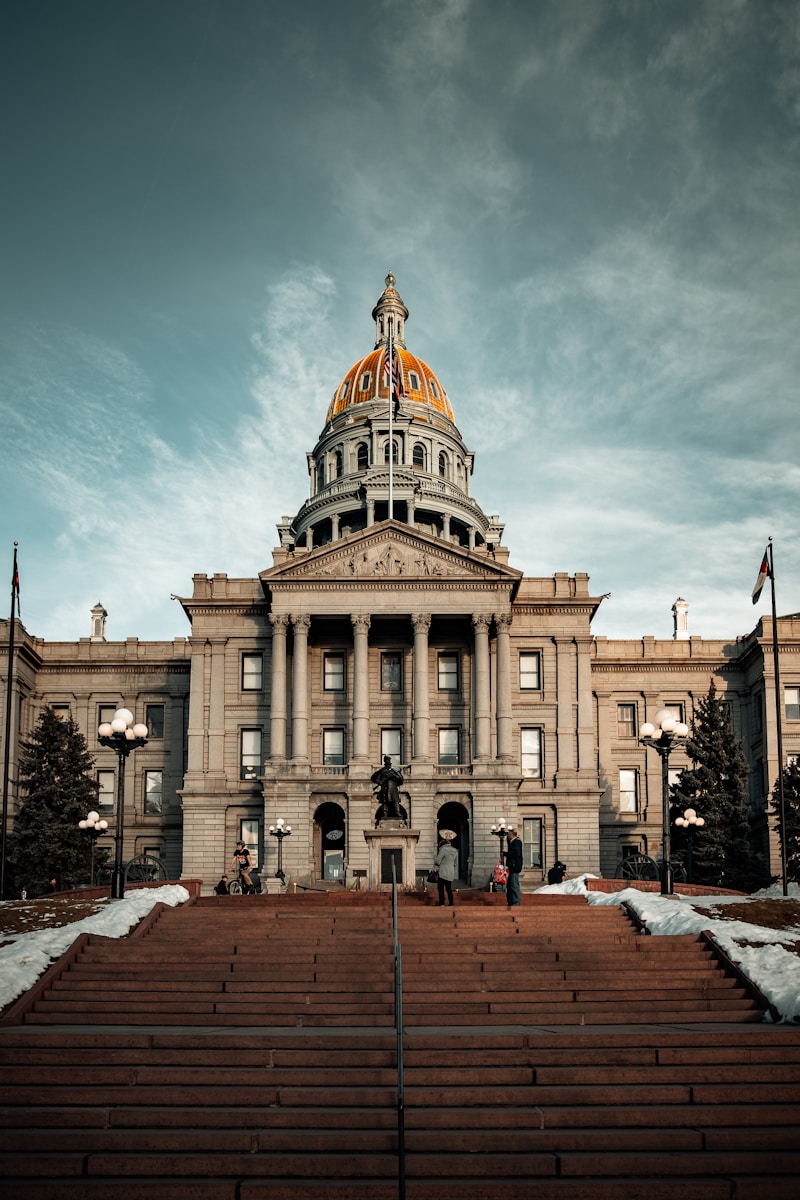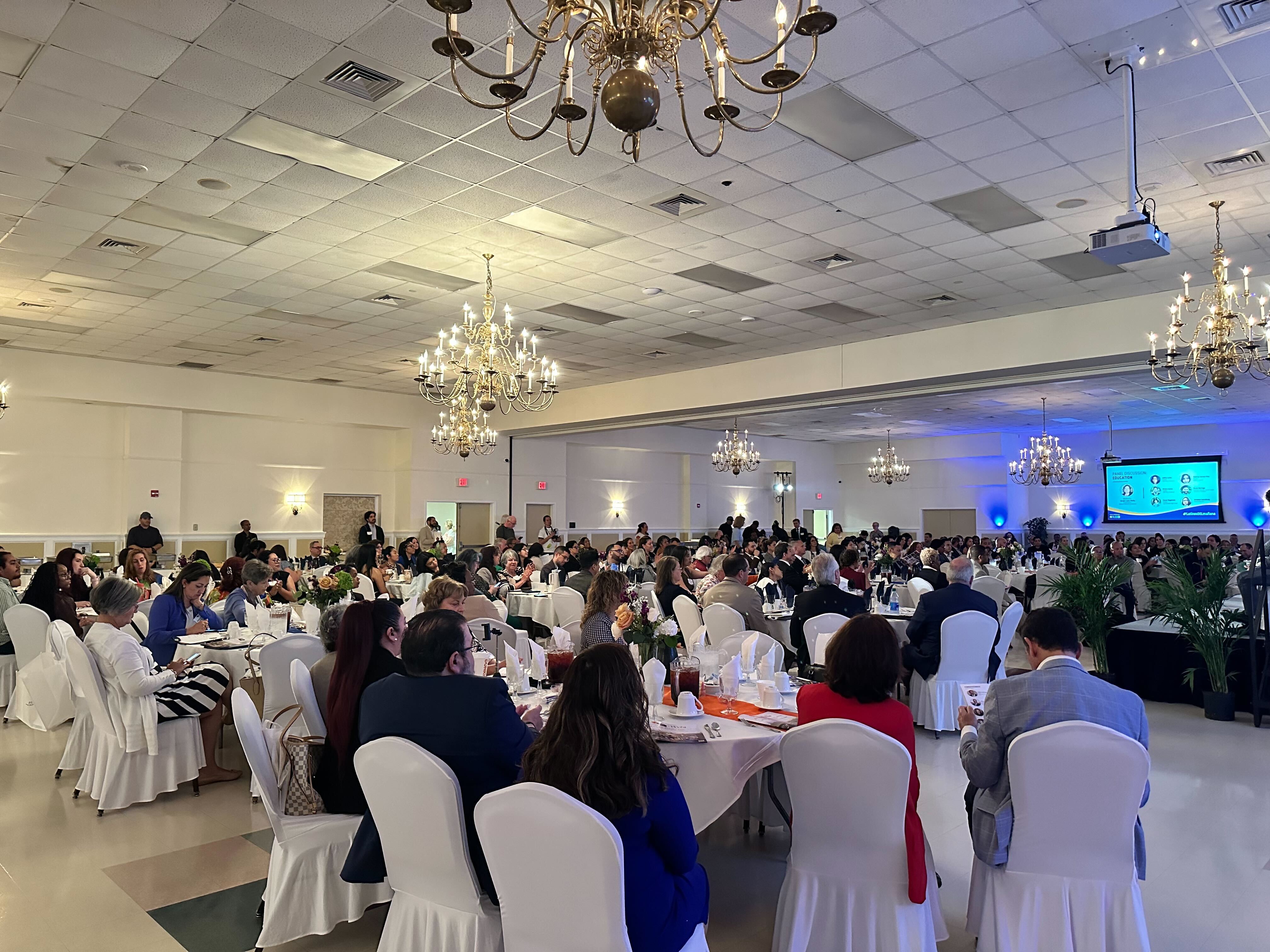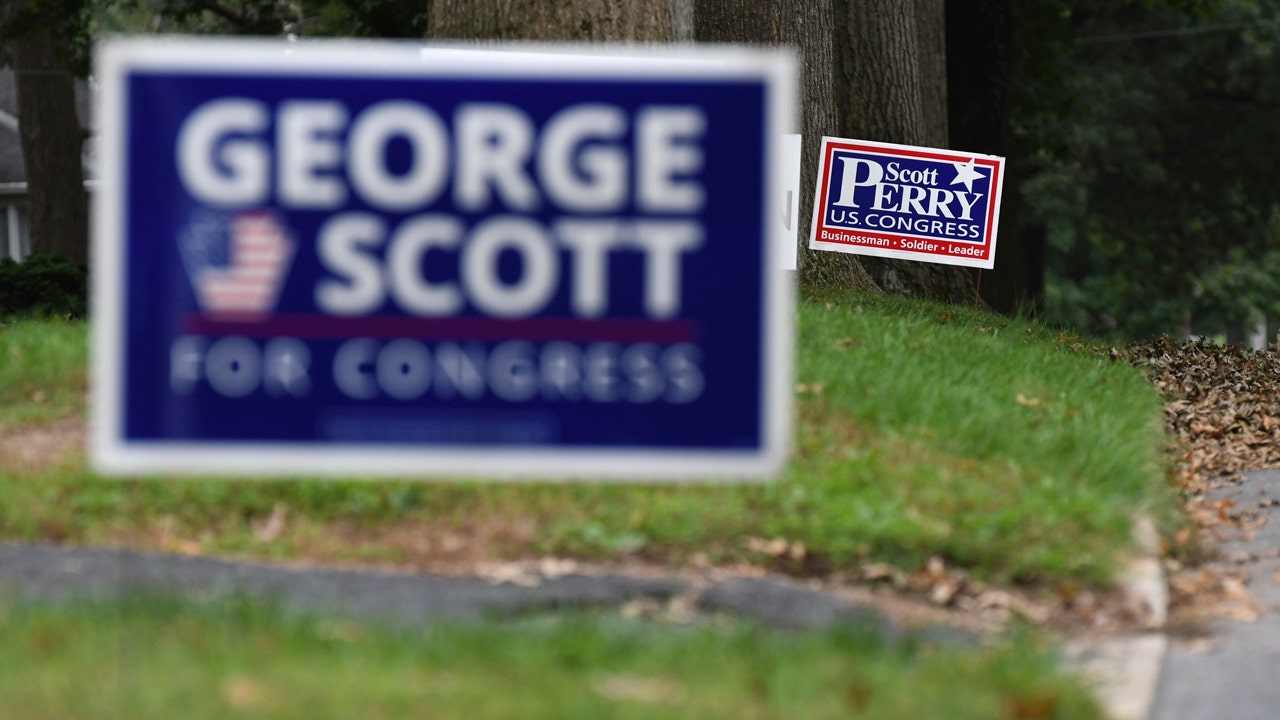New Jersey
Secaucus mayor cites “loophole” in New York City’s rules as buses start dropping off asylum seekers in New Jersey

SECAUCUS, N.J. — The mayor of Secaucus, New Jersey is responding after four buses were seen dropping off asylum seekers at the Secaucus Junction train station.
Mayor Michael Gonnelli said the first bus arrived on Dec. 30.
The asylum seekers then took trains into New York City, where Mayor Eric Adams recently issued an executive order requiring bus companies to notify NYC Emergency Management at least 32 hours before arriving or face fines.
In a statement, Mayor Gonnelli said in part:
It seems quite clear the bus operators are finding a way to thwart the requirements of the Executive Order by dropping migrants at the train station in Secaucus and having them continue to their final destination. Perhaps the requirements Mayor Adams put in place are too stringent and are resulting in unexpected consequences as it seems the bus operators have figured out a loophole in the system in order to ensure the migrants reach their final destination, which is New York City. Based on reports from the State Police this is now happening at train stations throughout the state.
I have been advised the State of New Jersey has a plan in place and we will be working closely with the Governor’s office, all law enforcement agencies, and the County to monitor this situation. At this point in time it seems train tickets are being secured for the migrants and they have been making their way to their final destination. We will continue to monitor this situation closely.
Mayor Adams announced the requirements last week amid the influx of charter buses carrying asylum seekers from Texas to New York.
The NYPD later said it was issuing warnings, not fines, to bus companies that violate the executive order.
Thanks for reading CBS NEWS.
Create your free account or log in
for more features.

New Jersey
Northern Lights Aurora Borealis Seen Over New Jersey

May 11, 2024
ROBBINSVILLE, NJ (MERCER)–Aurora Borealis, also known as the Northern Lights, was seen over New Jersey early this morning after skies cleared last night. Pillars of light in purple, red and green were observed this morning just before dawn.
According to NOAA we are experiencing the aurora because of large Coronal Mass Ejections (CMEs) on the Sun. They are large expulsions of plasma and magnetic field from the Sun’s corona.
If you missed this morning’s aurora you should have another opportunity tonight.
MidJersey.news has had reports of the aurora seen as far south as Florida.
Photo of the sun this morning May 11, 2024
Large sunspots can be seen on the sun this morning causing X-class solar flares and Coronal Mass Ejections (CMEs) creating conditions for the aurora.
According to NASA, Flares happen when the powerful magnetic fields in and around the sun reconnect. They’re usually associated with active regions, often seen as sun spots, where the magnetic fields are strongest. Flares are classified according to their strength. The smallest ones are B-class, followed by C, M and X, the largest. X-class flare like that can create long lasting radiation storms, which can harm satellites and even give airline passengers, flying near the poles, small radiation doses. X flares also have the potential to create global transmission problems and world-wide blackouts.

YET ANOTHER X-CLASS FLARE!
Space Weather Message Code: ALTK08
Serial Number: 37
Issue Time: 2024 May 11 0944 UTCALERT: Geomagnetic K-index of 8, 9-
Threshold Reached: 2024 May 11 0940 UTC
Synoptic Period: 0900-1200 UTCActive Warning: Yes
NOAA Scale: G4 - SevereNOAA Space Weather Scale descriptions can be found at
www.swpc.noaa.gov/noaa-scales-explanation
Potential Impacts: Area of impact primarily poleward of 45 degrees Geomagnetic Latitude.
Induced Currents - Possible widespread voltage control problems and some protective systems may mistakenly trip out key assets from the power grid. Induced pipeline currents intensify.
Spacecraft - Systems may experience surface charging; increased drag on low earth orbit satellites, and tracking and orientation problems may occur.
Navigation - Satellite navigation (GPS) degraded or inoperable for hours.
Radio - HF (high frequency) radio propagation sporadic or blacked out.
Aurora - Aurora may be seen as low as Alabama and northern California.
According to NOAA Space Weather Prediction Center:
Coronal Mass Ejections (CMEs) are large expulsions of plasma and magnetic field from the Sun’s corona. They can eject billions of tons of coronal material and carry an embedded magnetic field (frozen in flux) that is stronger than the background solar wind interplanetary magnetic field (IMF) strength. CMEs travel outward from the Sun at speeds ranging from slower than 250 kilometers per second (km/s) to as fast as near 3000 km/s. The fastest Earth-directed CMEs can reach our planet in as little as 15-18 hours. Slower CMEs can take several days to arrive. They expand in size as they propagate away from the Sun and larger CMEs can reach a size comprising nearly a quarter of the space between Earth and the Sun by the time it reaches our planet.
The more explosive CMEs generally begin when highly twisted magnetic field structures (flux ropes) contained in the Sun’s lower corona become too stressed and realign into a less tense configuration – a process called magnetic reconnection. This can result in the sudden release of electromagnetic energy in the form of a solar flare; which typically accompanies the explosive acceleration of plasma away from the Sun – the CME. These types of CMEs usually take place from areas of the Sun with localized fields of strong and stressed magnetic flux; such as active regions associated with sunspot groups. CMEs can also occur from locations where relatively cool and denser plasma is trapped and suspended by magnetic flux extending up to the inner corona – filaments and prominences. When these flux ropes reconfigure, the denser filament or prominence can collapse back to the solar surface and be quietly reabsorbed, or a CME may result. CMEs travelling faster than the background solar wind speed can generate a shock wave. These shock waves can accelerate charged particles ahead of them – causing increased radiation storm potential or intensity.
Important CME parameters used in analysis are size, speed, and direction. These properties are inferred from orbital satellites’ coronagraph imagery by SWPC forecasters to determine any Earth-impact likelihood. The NASA Solar and Heliospheric Observatory (SOHO) carries a coronagraph – known as the Large Angle and Spectrometric Coronagraph (LASCO). This instrument has two ranges for optical imaging of the Sun’s corona: C2 (covers distance range of 1.5 to 6 solar radii) and C3 (range of 3 to 32 solar radii). The LASCO instrument is currently the primary means used by forecasters to analyze and categorize CMEs; however another coronagraph is on the NASA STEREO-A spacecraft as an additional source.
Imminent CME arrival is first observed by the Deep Space Climate Observatory (DSCOVR) satellite, located at the L1 orbital area. Sudden increases in density, total interplanetary magnetic field (IMF) strength, and solar wind speed at the DSCOVR spacecraft indicate arrival of the CME-associated interplanetary shock ahead of the magnetic cloud. This can often provide 15 to 60 minutes advanced warning of shock arrival at Earth – and any possible sudden impulse or sudden storm commencement; as registered by Earth-based magnetometers.
Important aspects of an arriving CME and its likelihood for causing more intense geomagnetic storming include the strength and direction of the IMF beginning with shock arrival, followed by arrival and passage of the plasma cloud and frozen-in-flux magnetic field. More intense levels of geomagnetic storming are favored when the CME enhanced IMF becomes more pronounced and prolonged in a south-directed orientation. Some CMEs show predominantly one direction of the magnetic field during its passage, while most exhibit changing field directions as the CME passes over Earth. Generally, CMEs that impact Earth’s magnetosphere will at some point have an IMF orientation that favors generation of geomagnetic storming. Geomagnetic storms are classified using a five-level NOAA Space Weather Scale. SWPC forecasters discuss analysis and geomagnetic storm potential of CMEs in the forecast discussion and predict levels of geomagnetic storming in the 3-day forecast.
If you missed this morning’s aurora you should have another opportunity tonight. The following links will be helpful for those trying see Aurora Borealis tonight:
SPACE WEATHER PREDICTION CENTERAURORA DASHBOARD (EXPERIMENTAL)
https://www.swpc.noaa.gov/communities/aurora-dashboard-experimental
NOAA 30-minute forecast link:
AURORA – 30 MINUTE FORECAST
AURORA VIEWLINE FOR TONIGHT AND TOMORROW NIGHT (EXPERIMENTAL)




Northern Lights, Aurora Borealis as seen from the Robbinsville – Allentown, New Jersey area. (The earlier set of photos had wrong date posted. Photos were taken around 4:30 a.m. in Robbinsville – Allentown area May 11, 2024.)































Related
New Jersey
Northern Lights in New York, New Jersey, Connecticut Visible Now—Here's When and How

The tri-state area is getting its chance to see the beauty of the Northern Lights right at home, with New York, New Jersey, and Connecticut seeing a cosmic phenomenon brewing now.
It would first appear later in the night this Friday and reports claim that it is possible to see this cosmic display of lights this weekend, which typically takes place in far northern areas.
Aurora Borealis is a rare light show in North America, offering a glistening, iridescent, and majestic display.
Northern Lights in New York, New Jersey, Connecticut
NOAA’s Space Weather Prediction Center reported in its Planetary K-Index that the magnitude of geomagnetic storms coming this Friday, May 10, will reach 7.5 to 9kp.
This means that Aurora Borealis would appear in the skies of the tri-state area of New York, New Jersey, and Connecticut, starting from around 3:00 PM and peaking at around 9 PM until the wee hours of the night.
Typically, the northern lights only need a magnitude of 7kp to appear over a certain location in the world.
According to CBS News, New York will experience an 8kp geomagnetic storm magnitude, a new record high since 2005.
Read Also: Northern Lights-Like ‘Airglow’ Can Now be Artificially Recreated with Science
How and When to Watch Tristate’s Northern Lights
The Northern Lights in the US’ tristate area would peak at 2:00 AM on Saturday, May 11, and this is when the 9kp geomagnetic storm would occur.
It was also reported that it is possible to appear through the weekend to view it, but it remains unknown when to expect it.
CBS reported that users need not be directly under the Aurora Borealis to see it, as it is visible up to 600 miles away. However, it is recommended that they travel out of the city to avoid light pollution that could hinder its visibility.
Aurora Borealis: The Glamorous Sky Show
One of the most coveted and frequently occurring lights show from space is the Aurora Borealis, and its breathtaking display and otherworldy colors are some of its most coveted experiences for many.
There are many places to see the Aurora, whether in the European region, with Iceland being one of the most famous, or in North America, in various US states and Canada.
The Northern Lights are known as a natural occurrence from space. The phenomenon has been the subject of many studies, including why it brings out its unique colors and glows above the Earth.
When the magnetosphere, a three-dimensional space, receives solar winds from the Sun traveling at 250 to 500 miles per second, charged particles from the planet’s magnetic field interact with it, raising electrons to higher states. The excess energy portrays radiant light.
Many bucket lists include seeing the Aurora Borealis and planning trips to certain cities or regions where it is widely visible and can be enjoyed.
However, this recent cosmic event is coming to the US, particularly in the tri-state area, and can be easily spotted without equipment.
Related Article: Beautiful Northern Lights Could Happen Around the Globe, Scientists Warns What Comes After
ⓒ 2024 TECHTIMES.com All rights reserved. Do not reproduce without permission.
New Jersey
Bill that will decimate public access to NJ government records moves forward for approval
3-minute read
A bill that would gut access to public records is set be voted on by both chambers of the New Jersey Legislature on Monday after it cleared the Assembly Appropriations Committee on Friday afternoon.
The state Senate Budget Committee advanced the bill on Thursday after a sequel of sorts to the bill’s first hearing at a March meeting played out in a Trenton committee room: Advocates delivered hours of testimony against the bill, multiple lawmakers expressed opposition to it and ultimately the same outcome — the bill advanced.
When draft amendments were posted by the Legislature late Friday afternoon, they differed from the version made available to the press before the state Senate committee hearing on Thursday.
The most recent version available on the Legislature’s website removes the presumption of access clause at the beginning of the New Jersey Open Public Records Act, which notes that “government records shall be readily accessible.”
“It’s crazy to me that they pulled this bill in March to claim they would fix it, only to end up with a process and a bill that’s much worse,” CJ Griffin, an attorney and prominent OPRA advocate, said. “The reprint today contains new amendments which were not even before the committee, including gutting Section 1 of OPRA, which required agencies and courts to construe OPRA in favor of access. There’s no explanation for deleting that other than an extreme hostility toward transparency.”
In addition to that change, the implementation of the bill will now cost $10 million instead of $8 million.
What happened at the Assembly hearing?
Friday’s hearing before the Assembly Appropriations Committee was no different from Thursday’s in the state Senate. Dozens of advocates pointed to flaws with the bill. They questioned lawmakers’ motives and called for a more collaborative discussion to further amend the bill.
“Even with limited time to review the amendments, however, we can see that many problematic provisions remain — sort of wolves in sheep’s clothing,” said Evelyn Murphy, president of the League of Women Voters for Monmouth County. “You changed the language, but you did not address the core issues.”
Marleina Ubel, an analyst at the New Jersey Policy Perspective, said that the amendments do “little to address failings of the bill” and “place the onus of the burden on the public rather than on the agency.”
“New Jersey is already a disgraceful 48th in the nation for public access laws and will no doubt slip even further,” she said. “Fewer than 37% know their congressional representative. How many people know the names and the titles and all of the things we are going to be asking them to do to get access to these records?”
Representatives from agency organizations such as the League of Municipalities, New Jersey Conference of Mayors and New Jersey Association of Counties were in support of the bill, though they said that if it were up to them, they would have implemented even more restrictions on access to public records.
“We don’t think this bill goes far enough but this is a legislative process. You don’t get everything you wanted all the time,” said William Caruso, legislative counsel for the New Jersey Conference of Mayors.
Many had hoped for lightning to strike twice — and wanted the bill to again be pulled from consideration at the last moment, as had happened in March.
Instead, the meeting — which featured just the OPRA bill — went on as planned and ultimately the bill advanced with a final tally of 8-1 with Assemblyman Jay Webber abstaining.
Our view: Amended OPRA bill an absolute sham. Gov. Murphy, veto this affront to democracy
What would the ‘reform’ do to roll back OPRA?
Since the bill was first heard in committee in March, Republicans in both chambers have joined as sponsors — state Sen. Anthony Bucco in the upper chamber and Assemblywoman Victoria Flynn in the lower chamber.
The updated bill includes the renewed ability to make anonymous requests and the removal of exemptions for call and email logs and digital calendars.
It also implements stricter requirements on how to request things like texts and emails including specific accounts, times, topics and titles.
There are modifications to the provision limiting access to metadata to allow for access only to the “portion that identifies authorship, identity of editor, and time of change.”
Language restricting data brokers and commercial entities that resell information obtained through OPRA was removed.
Among the parts that remain mostly intact include one of the most controversial, known as the fee-shifting provision. This provision previously required public record custodians that had not, according to a judge, properly provided records to pay the requesters’ attorney fees.
The bill initially changed that to say winners of OPRA lawsuits “may” be entitled to legal fees if the public agency is found to have knowingly violated the law or unreasonably denied access. In its amended form, the bill still eliminates the attorney fee requirement but does allow for judges to decide that fees are warranted if the denial was unreasonable, if the agency “acted in bad faith, or knowingly and willfully violated” the law.
The amendments also include language that would allow for a court to “issue a protective order limiting the number and scope of requests the requester may make” if they “sought records with the intent to substantially interrupt the performance of government function.”
The legislation was first enacted in 2002 and requires local, county and state government entities to provide the public with access to government records in New Jersey.
This bill is slated for a full state Senate vote on Monday and is expected to appear before the full Assembly on Monday as well.
Katie Sobko covers the New Jersey Statehouse. Email: sobko@northjersey.com
-

 Politics1 week ago
Politics1 week agoThe White House has a new curator. Donna Hayashi Smith is the first Asian American to hold the post
-

 News1 week ago
News1 week agoPolice enter UCLA anti-war encampment; Arizona repeals Civil War-era abortion ban
-

 Politics1 week ago
Politics1 week agoAdams, NYPD cite 'global' effort to 'radicalize young people' after 300 arrested at Columbia, CUNY
-

 World1 week ago
World1 week agoTurkish police arrest hundreds at Istanbul May Day protests
-
)
) Movie Reviews1 week ago
Movie Reviews1 week agoThe Idea of You Movie Review: Anne Hathaway’s honest performance makes the film stand out in a not so formulaic rom-com
-

 News1 week ago
News1 week agoSome Republicans expected to join Arizona Democrats to pass repeal of 1864 abortion ban
-

 News1 week ago
News1 week agoSome Florida boaters seen on video dumping trash into ocean have been identified, officials say
-

 World1 week ago
World1 week agoIn the upcoming European elections, peace and security matter the most




















